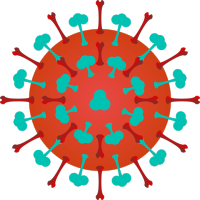search
| acupoint | Quyuan |
bubble_chart Etymology _en.webp) In scapular region, at the depression on the medial end of supraspinous fossa, at the midpoint of the line connecting spinous process of 2nd thoracic vertebra and Naoshu (SI10). Directly above Jianjing (GB21).
In scapular region, at the depression on the medial end of supraspinous fossa, at the midpoint of the line connecting spinous process of 2nd thoracic vertebra and Naoshu (SI10). Directly above Jianjing (GB21).
"Qu" (曲) means bending; "yuan" (垣) means low wall, here describing the scapular spine. The point is located at the curved, medial end of scapular spine, hence the name.
bubble_chart Location
_en.webp)
Quyuan (SI13) acupoint
(adapted from "Meridians and Acupoints")
(adapted from "Meridians and Acupoints")
- Zhenjiu Jiayi Jing: "In the center of shoulder, in the depression of the curved scapula";
- Zhenjiu Jicheng: "Between Jianjing (GB21) and Tianzong (SI11), slightly lateral".
- Muscles: trapezius, supraspinatus.
- Nerve: overlapping distribution of the lateral cutaneous branches of the posterior rami of 1st to 3rd thoracic nerves, accessory nerve, and branches of suprascapular nerve.
- Vessels: transverse cervical artery and vein, with deeper branches of suprascapular artery and vein.
Perpendicular or oblique insertion 0.5~1 cun. Moxibustion with moxa cone 3 to 10 minutes, moxibustion with moxa stick for 10 to 15 minutes.
Dispel wind.
- Classical: pain and Bi-syndrome around the scapula, heat and pain in shoulder and arm, in stiffness and pain shoulder and arm.
- Modern: shoulder periarthritis, supraspinatus tendonitis, subscapular neuralgia, cervical spondylosis.
- Subscapular neuralgia: Quyuan (SI13), Naohui (TE13), Tianzong (SI11), Jianyu (LI15).
- Supraspinatus tendonitis: Quyuan (SI13), Binao (LI14), Yanglingquan (GB34) (all affected sides).
bubble_chart Other Related Items






